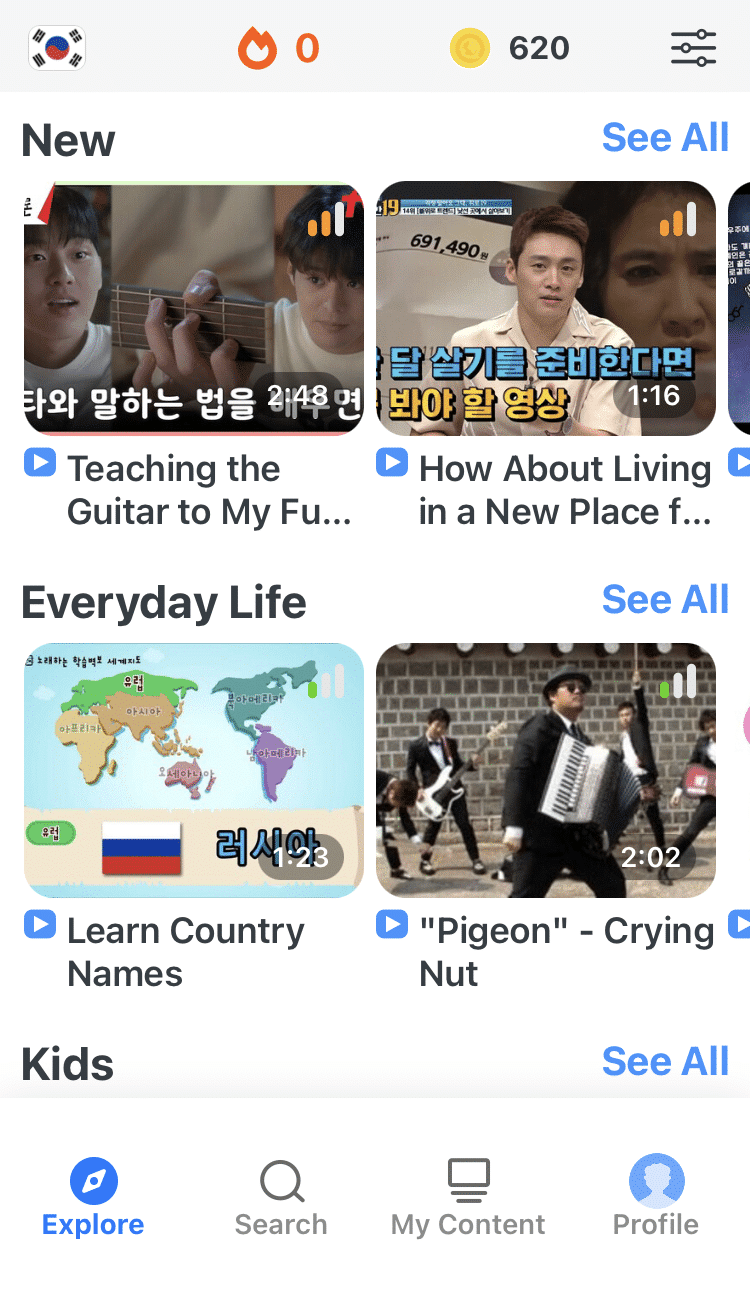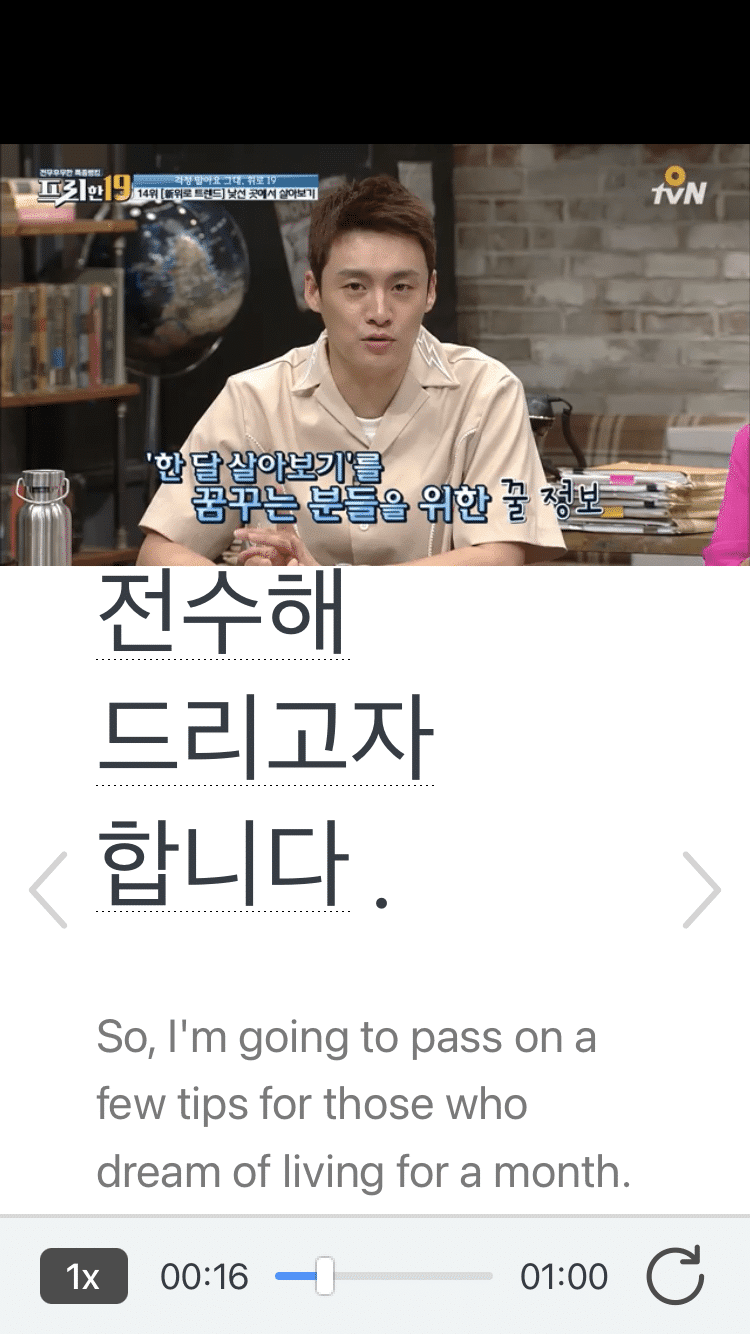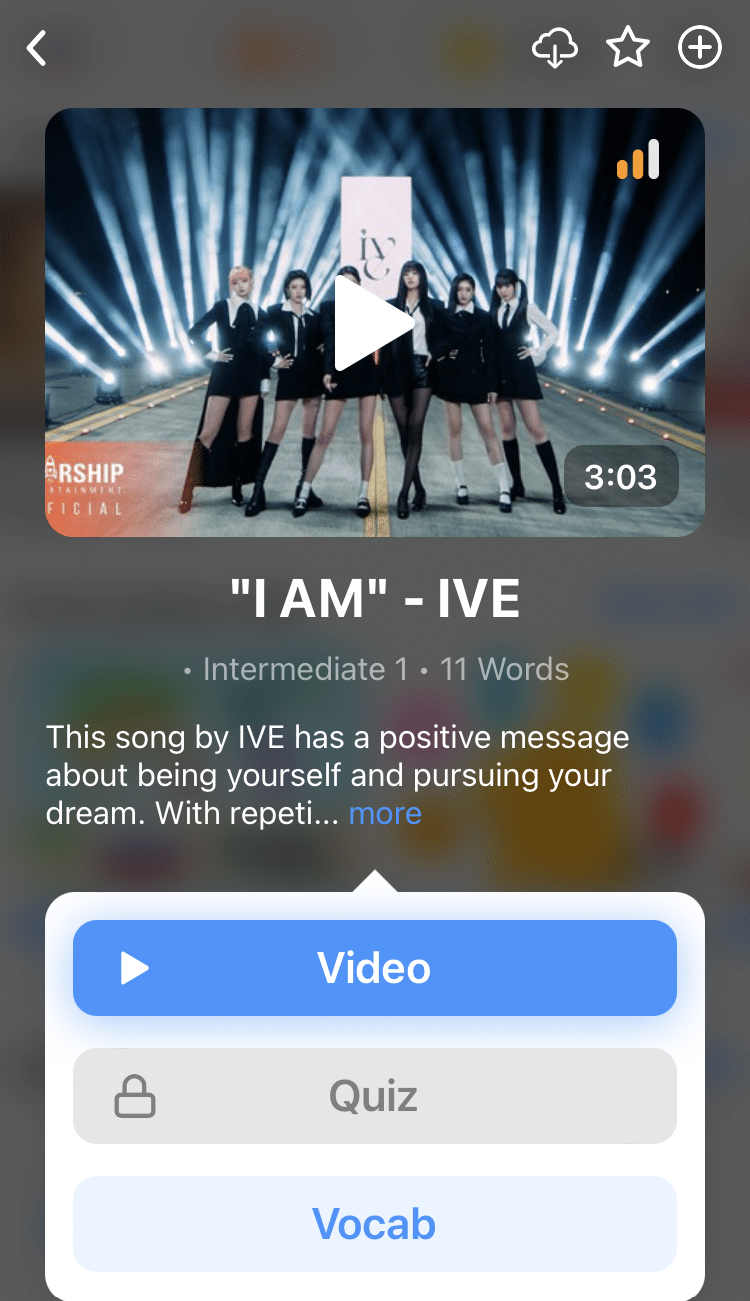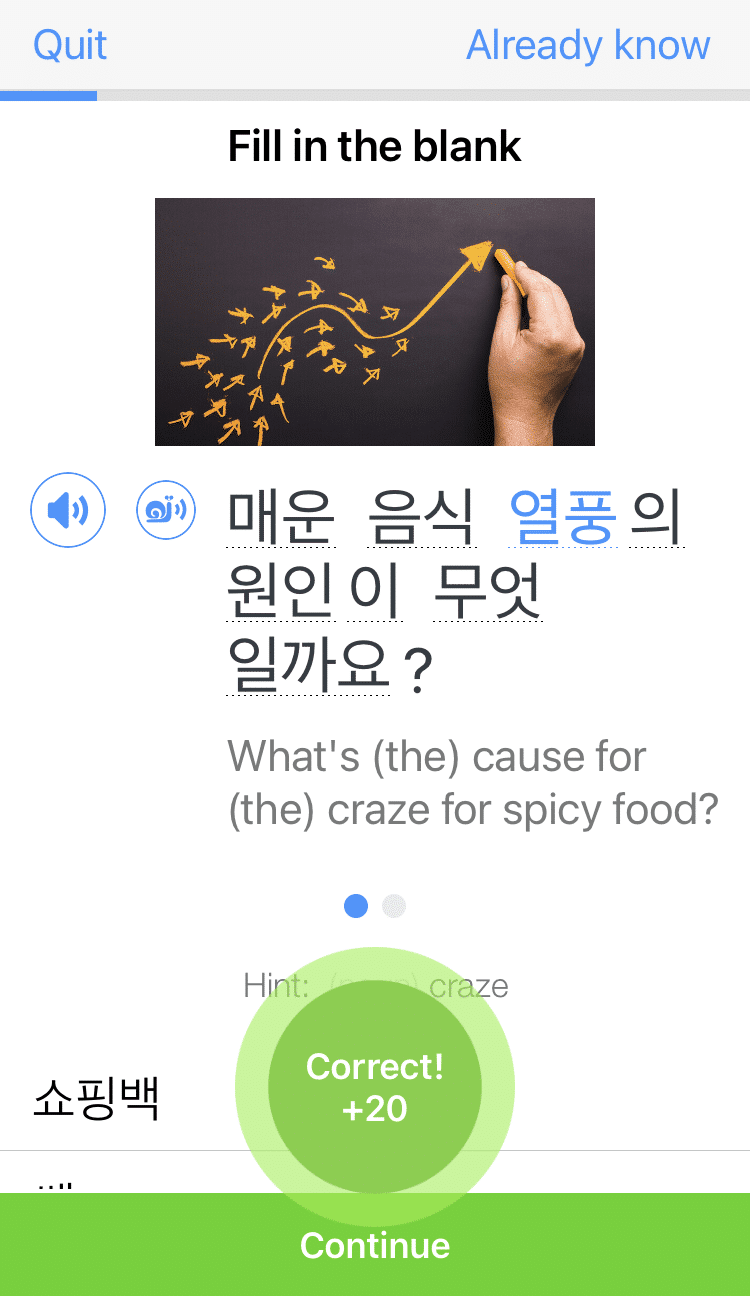
Korean Vowels
Korean vowels are known as 모음 . There are 21 in total, and you’ll definitely want to put in the effort to learn each of their little quirks (especially their unique pronunciations).
It’s important to note right off the bat that Korean vowels aren’t quite like English vowels in either form or sound. For one, Korean vowels cannot be written without an accompanying consonant. So here’s a simple guide to Korean vowels: What they all are, how they’re pronounced and some example words to help you sound them out.
Contents
- Basic Vowels
- Double Vowels
- Horizontal and Vertical Vowels
- Korean Words Starting with Vowel Sounds
- And One More Thing...
Download: This blog post is available as a convenient and portable PDF that you can take anywhere. Click here to get a copy. (Download)
Basic Vowels
In Hangul there are 10 basic vowels. I’ll provide the Korean vowel, its romanized spelling and some pronunciation examples.
ㅏ (a). Sounds like “ah” as in:
father
ta-da
ㅑ (ya). Sounds like “yah” as in:
yawn
yacht
yard
ㅓ (eo). Sounds like “uh” as in:
under
alone
ㅕ (yeo). Sounds like “yuh” as in:
yum
young
yup
ㅗ (o). Sounds like “oh” as in:
only
ogre
opal
ㅛ (yo). Sounds like “yoh” as in:
yogurt
yo-yo
yodel
ㅜ (u). Sounds like “oo” as in:
fool
rule
ㅠ (yu). Sounds like “yoo” as in:
you
yuca
ㅡ (eu). Sounds somewhat like “euh” or “ih.” To pronounce properly, make sure that your bottom lip is tugged down so that your bottom teeth are exposed.
open
token
frozen
ㅣ (i). Sounds like “ee” as in:
beef
pea
Double Vowels
These are exactly what they sound like! Korean basic vowels can be combined side-by-side to make a vowel “combo.”
A double vowel is pronounced as one sound, usually a blend of the two vowels it’s made of. There are 11 double vowels in the Korean language, and they are often (but not always) included in official Korean alphabets alongside basic vowels.
In terms of writing, a double vowel is still considered a single vowel.
Double vowels are a bit more complicated to pronounce than basic vowels. Some of them sound very similar to each other, so much so that they’re often not even differentiated in common speech. They are best distinguished when written, in either Hangul or in romanized English.
ㅐ (ae). Combination ofㅏ andㅣ. Sounds like “eh” as in:
bed
wet
ㅒ (yae). Combination of ㅑ and ㅣ. Sounds like “yeh” as in:
yellow
yes
ㅔ (e). Combination ofㅓandㅣ. Similar toㅐ, sounds like “eh” as in:
bed
wet
sled
egg
ㅖ (ye). Combination of ㅕ andㅣ. Similar toㅒ, sounds like “yeh” as in:
yellow
yes
yet
yell
ㅚ (oe). Combination of ㅗ andㅣ. Sounds like “weh” as in:
wait
west
ㅟ (wi). Combination of ㅜ and ㅣ. Sounds like “oo-ee” or “ui” as in:
weak
wheat
queen
ㅢ (ui). Combination of ㅡ and ㅣ. Somewhat similar to ㅟ, but can sound closer to “uwie” or “ih-ee.” As with ㅡ, make sure your bottom lip is pulled down.
This double vowel can be pronounced in different ways depending on the words it’s used in:
ㅘ (wa). Combination of ㅗ and ㅏ. Sounds like “wah” as in:
water
waffle
ㅝ (woorweo). Combination of ㅜ and ㅓ. Sounds like “wuh” as in:
wonderful
once
ㅙ (wae). Combination of ㅗ and ㅐ. Similar to ㅚ, sounds like “weh” as in:
wait
west
went
ㅞ (we). Combination of ㅜ and ㅔ. Similar to ㅚ and ㅙ, sounds like “weh” as in:
wait
west
went
weather
To recap, these are the double vowels that sound similar to each other:
- ㅒ (yae) and ㅖ (ye)
- ㅐ (ae) and ㅔ (e)
- ㅚ (oe), ㅙ (wae), ㅞ (we)
Again, many Korean natives choose not to distinguish the similar-sounding double vowels. In both verbal and written communication, they may use them interchangeably and no one would really bat an eye. Context makes the meaning clear.
However, when you do learn Korean words, do try to learn the correct vowel used for spelling purposes. This is especially the case if you’re working on more formal assignments (such as writing an email to your supervisor or client) or taking a Korean proficiency test.
If you want to see how these vowels are used in practice, you could check out the language learning platform FluentU.
FluentU takes authentic videos—like music videos, movie trailers, news and inspiring talks—and turns them into personalized language learning lessons.
You can try FluentU for free for 2 weeks. Check out the website or download the iOS app or Android app.
P.S. Click here to take advantage of our current sale! (Expires at the end of this month.)
Horizontal and Vertical Vowels
Korean vowels are either horizontal or vertical in shape.
Anytime the vowel contains a vertical line |, it’s a vertical vowel. And anytime the vowel contains a horizontal line —, it’s a horizontal vowel.
It’s important to know which vowel is what, because it’ll affect how you write out a Korean syllable consisting of a consonant and vowel.
For a vertical vowel, a consonant is written beside the vowel, to its left. Like so
- 자
- 히
- 려
- 너
For a horizontal vowel, a consonant is written above the vowel.
- 느
- 후
- 도
- 죠
For double vowels, the placement of the consonant depends on the first vowel of the pair. If the first vowel is a vertical one, then the consonant is just written beside it. If the first vowel is a horizontal one, then the consonant is written above it.
- 폐
- 회
- 숴
Remember, in writing, a double vowel is still treated like a single vowel! See how the consonant can shrink in size to fit into the smaller space afforded by a horizontal and vertical vowel combo.
Korean Words Starting with Vowel Sounds
Earlier, I mentioned that within a syllable, a Korean vowel must be accompanied by a consonant.
This is true, but there’s a little catch – you could just have a syllable consisting only of vowel sounds.
How is that possible? With the letter ㅇ, otherwise known as the “silent consonant” in the Hangul alphabet. It carries no special distinct sound of its own, making it a possible “placeholder” letter. Therefore, in a Korean syllable, ㅇ can certainly take the consonant’s position right beside the vowel, but it’s really the vowel that’s being pronounced.
Here are a few examples of this silent consonant at work in vowel-based syllables:
- 아 – pronounced “ah”
- 예 – pronounced “yeh”
- 외 – pronounced “weh”
So, those are your Korean A, E, I, O and U sounds.
Really pay attention to those small pronunciation nuances and get used to them by writing out a Korean syllable!
And One More Thing...
If you enjoyed this post, you're already halfway to having the time of your life learning Korean with FluentU!
FluentU makes it possible to learn with K-pop videos, funny commercials, entertaining web series and more. Just a quick look will give you an idea of the variety of FluentU videos on offer:

FluentU really takes the grunt work out of learning languages, leaving you with nothing but engaging, effective and efficient learning. It's already hand-picked the best videos for you (which are organized by level and topic), so all you have to do is simply choose any video that strikes your fancy to get started.
Each word in the interactive captions comes with a definition, audio, image, example sentences and more.

Access a complete interactive transcript of every video under the Dialogue tab, and easily review words and phrases from the video under Vocab.

You can use FluentU’s unique Quiz Mode to learn the vocabulary and phrases from the video through fun questions.

FluentU keeps track of what you're learning, and tells you exactly when it's time for review, giving you a 100% personalized experience.
Review sessions use video context to help embed the words in your memory.
Start using the FluentU website on your computer or tablet or, better yet, download the FluentU app from the iTunes or Google Play store. Click here to take advantage of our current sale! (Expires at the end of this month.)



